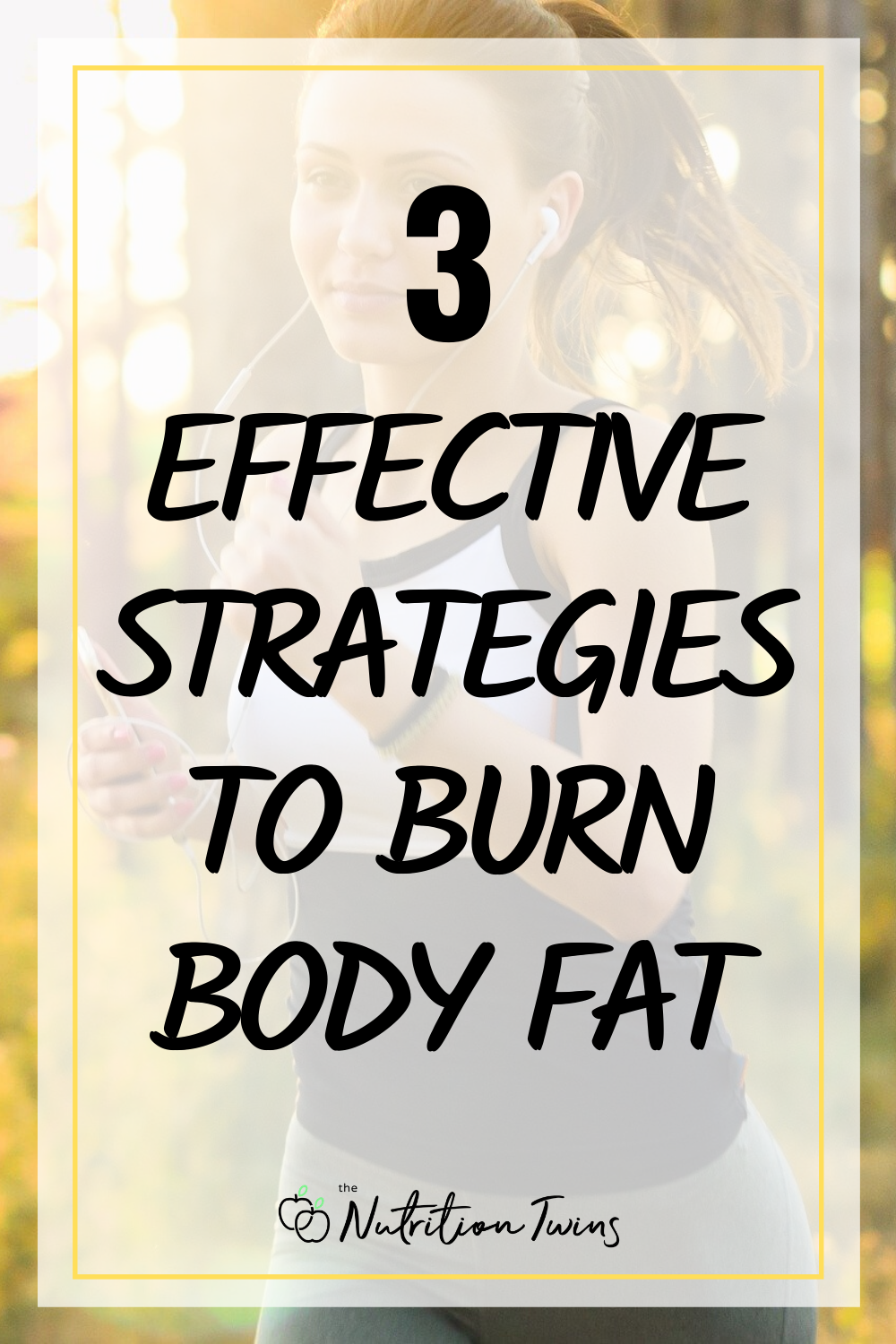
Over the last few years, as registered dietitians and certified personal trainers, we’ve had new clients coming to us saying, “I don’t want to lose weight, I want to lose body fat.” Even when our clients come to us wanting to lose weight, we’ve always focused on helping them to lose body fat, and not weight, because if weight loss isn’t coming from fat, it’s coming mostly from lean muscle tissue and water. If you lose lean muscle and water, you get a slower metabolism and decreased energy levels! And let’s face it, that’s not what you’re paying us to do! You could slow your metabolism and feel low in energy on your own! 🙂 That said, a side effect of losing body fat is that your weight will go down, unless you are building muscle mass at an equal rate to the fat loss (which is quite difficult to do). So, we’ve always been helping our clients to lose body fat! Here are three effective strategies to do it!
#1: Choose the best exercises for promoting fat loss.
A lot of our new clients (and gym friends) ask us, “why did I gain weight when I started working out?” Initially they thought they put on muscle and not body fat, but when their clothes got tight, they knew it was body fat, too.
Why do people often gain body fat when they start exercising?
For many people who start working out, their appetite increases in a way that surpasses the amount of exercise that they’ve done! Someone may lift weights for half an hour and then may leave the gym and feel ravenous, so they go and eat an extra snack. While they do build some muscle, which weighs more on the scale, they also gain body fat from eating more than they’ve burned off. This is why they tell us that their clothes feels tight, their belly looks a bit bigger and their body fat has gone up.
So, how do you prevent this scenario in which exercise back-fires, causing you to gain weight (fat) when it should be helping you to burn body fat?
First, perform exercises that most efficiently burn fat.
Exercising builds lean muscle mass, which boosts your metabolism, and burns calories while you do it, so it helps to create a calorie deficit—and both of these things are essential for losing body fat. To choose the most effective exercises, focus on 3 things:
- Working large muscle groups
- Challenging your cardiovascular fitness
- Intensity

Think of:
- jumping rope (this engages your arms, legs, abs and butt—a full body workout to build lean muscle [which boosts metabolism] and gets your heart pumping [burns calories])
- running (this works your legs and butt and is no surprise everyone’s fat loss go-to)
- biking
- doing HIIT workouts
- burpees
- stair step-ups
- pushups
- lunges
- Try our fat-burning workout
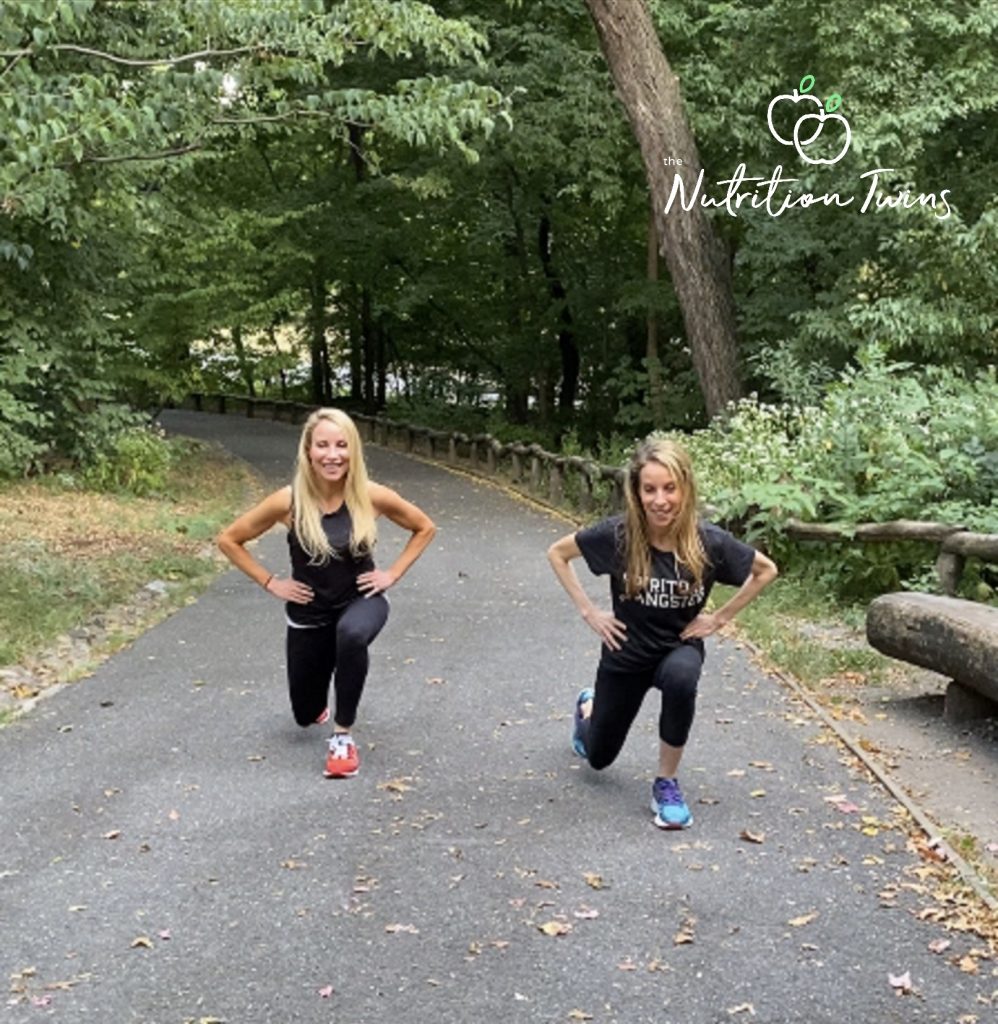
Even with an exercise routine that is designed for burning fat, if you eat more because exercise increases your appetite and you don’t exercise as hard as you think, you may not lose body fat the way that you hoped!
We both experience increased appetites from exercise. On Tammy’s interval days she’s hungrier than other days. When Lyssie doesn’t exercise, she notices she doesn’t have much of an appetite, and for her that makes her not feel as healthy because we both also don’t have appetites when we’re sick.
How do you prevent the overeating that often accompanies exercise?
First, make sure you’re drinking plenty of water so that you don’t mistake thirst for hunger. This confusion is common when people start exercising… they have an increased water loss through sweat and through breathing and don’t drink more water (or enough water) to make up for it and they mistakenly think they’re hungry when they’re really simply dehydrated. They end up easily eating more calories than they burned off. They could have simply consumer more water and there would be fat loss! Note: Even if you don’t sweat a lot, you’re losing water, it’s just evaporating. Plus, the increased respiration from breathing faster causes water loss.
Here’s a good rule of thumb to prevent dehydration and the overeating that comes with it:
Our hydration guidelines:
Note: Water can be substituted for one of our Clean-Tox drinksTM from our 21-Day Body RebootTM, like the drinks below the photo)
- Drink 16 ounces of water when you wake up.
- Drink 16 ounces of water with your meals and sip it throughout the day.
- Drink at least 16 ounces of water before and after working out. (This may be the water that you sip throughout the day.)
- Drink 6-8 ounces for every 15 minutes during your workout.
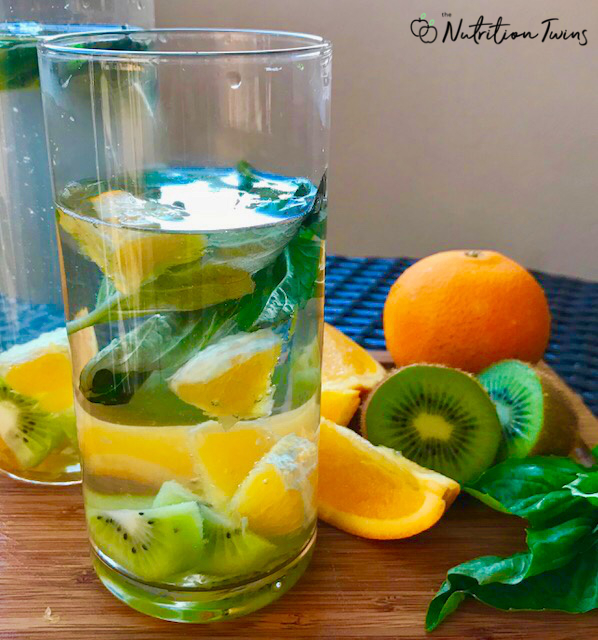
Apple Cider Vinegar Lemon “Detox” Drink
Sparkling Cucumber and Refresh “Detoxer
Apple Cider Vinegar & Lime Drink
Cucumber Blueberry Water Flush
If you’re properly hydrated and you still have an increased appetite from exercising that’s causing you to eat more, do this:
If you’ve upped your water intake and have followed our hydrating guidelines above and realize that your appetite is still increasing from the work out, pay attention to the timing of your meals surrounding your exercise. Ask yourself if you really need more food or if you just need to time what you eat better. Perhaps you are working out and waiting hours to eat. This may result in you feeling ravenous. Instead, you can take advantage of your body’s increased calorie burning/ metabolic burn that occurs after your workout by timing your meal immediately after exercise. This way your body will be in a high metabolic state when you feed it, rather than burning high-speed on empty while you get hungrier and hungrier, only to eat later when the metabolic burn has slowed. Eating during this window will allow your body to efficiently use up the fuel you give it, and this should help to prevent hunger. If you work out at 5PM and then wait hours before dinner and feel ravenous, perhaps you can work out at 6PM and eat dinner immediately after.
If your hunger still outpaces your workout and you’ve been drinking plenty of water and timing your meals better, try filling up on some extra veggies. These will provide anti-inflammatory compounds and fiber and water and won’t thwart your fat loss efforts but will help to fill you up. Just avoid adding more than a teaspoon of oil to them for this extra portion of food to ensure you really burn off more than you eat.
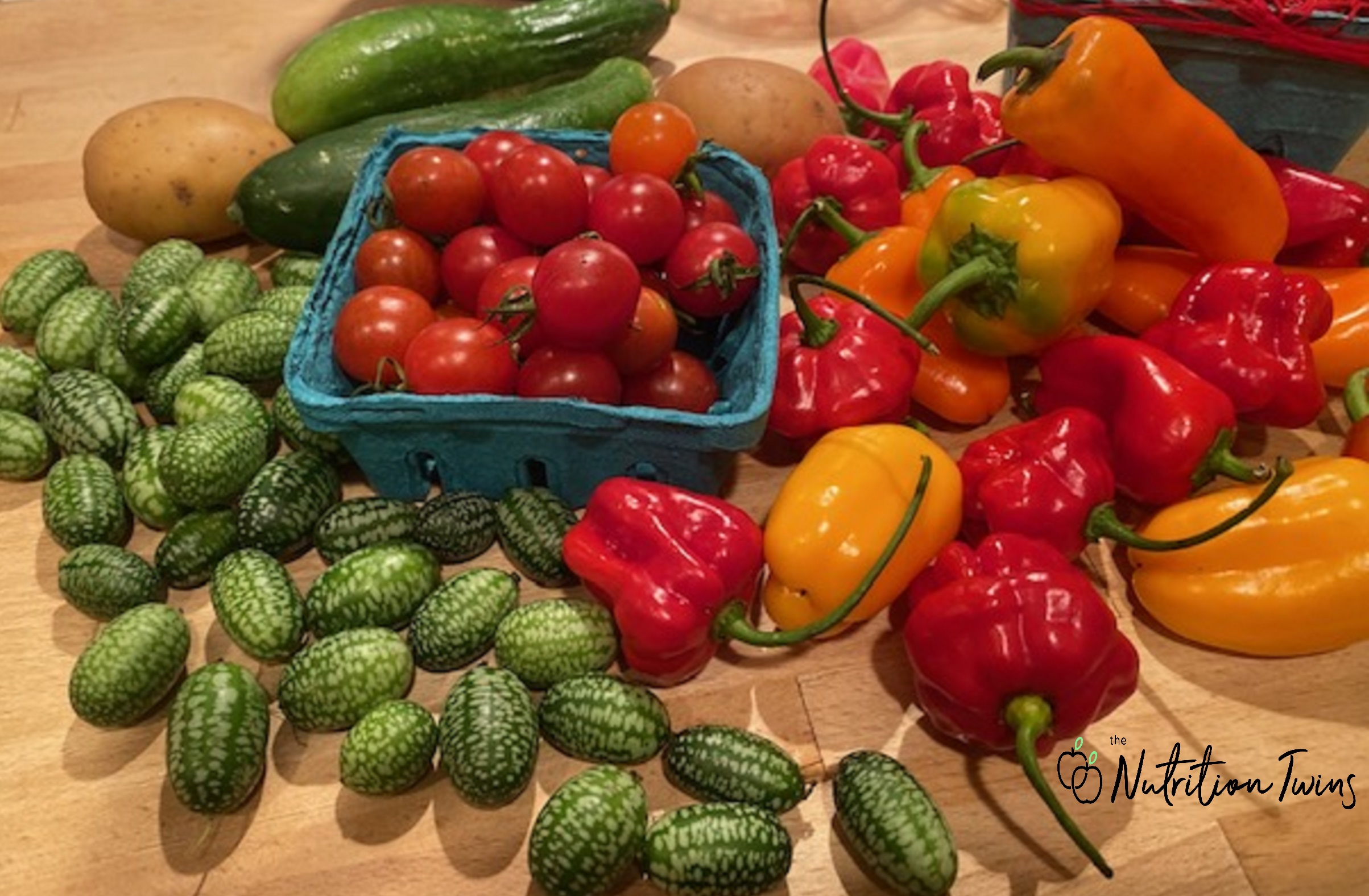
#2: Swap Sugar for “Less Sweet” Sweets to Lose Body Fat.
A lot of people are eating too much sugar and starches, but especially sugar. If your diet is high in either, particularly sugar, you’ll have energy highs and crashes and those crashes signal your body that you need more energy, which signals your brain that you need more food. If you eat something and you don’t really need it, you gain body fat. Sugar is easy to overeat, and it doesn’t’ fill you up—and it has NO redeeming qualities—no nutrients, no health benefits, nothing. It’s like that friend that you have around and rely on for those times when you’re lonely, but she ends up always making you feel bad about yourself. Deep down, you know that you’re better off without her and that she’s not serving you well. You cut her out of your life and while you miss her occasionally on a lonely night, as soon as you cut the cord, it becomes clear how much better you are without her. (Luckily, we only had one friend like that! Well, two, sugar plus one other and with both we see them only occasionally and we’re much better off! 🙂
What’s more, sugar causes inflammation, which not only causes damage to your body but makes it inefficient and prevents it from functioning at its’ peak. Your body can’t efficiently burn fat or build lean muscle if it’s working in overdrive to reduce inflammation. Even as two girls with a crazy sweet tooth, we know this is true, ah!
As girls who do have a thing for sweets, (if its’ chocolate, chances are we love it, and doubly) we’ve personally witnessed how swapping out sugar can result in fat loss and science proves it. We’ve overeaten frozen yogurt like nobody’s business in our past. We never felt good afterwards –we felt exhausted and bloated. And when we committed to swapping it for naturally sweet foods, we felt incredibly better and we also dropped a few pounds. The key to cutting sugar is allowing your taste buds to adjust to less sweet foods. Manufacturers have devised unnatural foods that are heavily sweetened that hijack our taste buds to crave ultra-sweet foods. The great news is we can gain control of our taste buds and less sweet foods can taste sweet to us again, just the way nature intended when it gave us naturally sweet foods!
Start by swapping out all added sources of sugar and replace them with naturally sweet foods like frozen or fresh fruit.
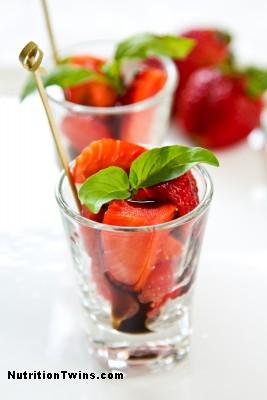
You could also swap a bowl of ice cream for blended nice-cream (a blended small frozen over-ripe banana or for our Strawberry-Mint Ice Cream).

Or trade in ice cream for 1 cup of frozen, slightly thawed blueberries. Blueberries contain anti-inflammatory nutrients and may assist in weight loss since they contain the phytochemical C3G that may increase production of both adiponectin (which enhances fat metabolism) and leptin (which suppresses appetite). Plus, blueberries are packed with antioxidants, and are particularly rich in anthocyanins, which means they have the power to help mop up free radicals after exercise, protecting cells from damage and assisting with cell and muscle repair.
#3: Reconfigure your Plate to Match Fat-loss Research
Before sharing this research that involves cutting out starchy carbohydrates, note that our clients have great, long-lasting body fat loss results by including a small portion (1-2 to 2/3 cup) of wholesome carbohydrates (such as sweet potatoes, oatmeal, quinoa and fruits) with their meals. Our proven body fat loss system is sustainable and feels easy for them and garners them results that last. If you’d like to be a client, set up a chat with us here.
That being said, some research shows you can rearrange your plate for fat loss by making it packed with protein and low carbohydrate vegetables and by including some fat. It’s important to do this at every meal, not just breakfast or dinner.
If you notice something is missing here, good eye! Carbohydrates aren’t king here and research now shows that lower carbohydrate diets are more effective in weight loss than low fat diets. A lower carb diet that reduces foods like breads, rice, bagels, pasta and other sugars and starches has been shown to reduce appetite and can help with weight loss. (A carbohydrate restricted diet isn’t for everyone and we don’t recommend it for many people, especially endurance athletes and others! It’s super restrictive and backfires for some people.)
Here’s how to do it:
Protein:
To build your meals and your plate, start with protein. Remember, protein is the building block for muscles (as well as tendons, organs and skin and plays an important role in the body’s enzymes, hormones, and neurotransmitters) and the more lean muscle tissue you have, the more calories your body burns, even while you sleep! Who doesn’t want to burn extra calories and lose weight, even while they lie in bed? More good news? A higher protein, carbohydrate restricted diet has been shown to burn more calories, and some studies show as much as much as an extra 80-100 calories per day. Just keep in mind that if you eat too much protein (or too much of anything!), it doesn’t equal more lean muscle tissue, it means more body fat, so easy does it, you don’t want to overdo it. Generally 25-35 grams per meal is plenty, so typically if you’re a female, about 4 ounces of protein (of fish, chicken, poultry, lean beef, etc.) and 5 ounces of protein for males per meal is adequate.
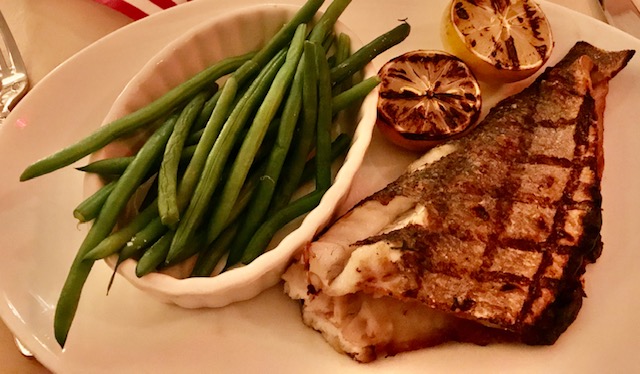
We have our clients start by adding nutrient-rich, healthy protein options and we encourage them to choose wild seafood (not farmed) when possible, as well as organic, hormone and antibiotic free meats, eggs and dairy. Here are some good protein options:
- Wild salmon
- Wild shrimp
- Sardines
- Trout
- Shrimp
- Scallops
- Calamari
- Cod
- Chicken breast
- Turkey breast
- Lean cuts of Beef
- Eggs
- Greek Yogurt
- Pulses (dried peas, beans, chickpeas and lentils)
Next up: Low Carb Veggies. Go to town here! We always say, “the more, the merrier” when it comes to veggies, and for this plan it’s all about the low-carb, non-starchy ones. Vegetables are packed with phytonutrients, antioxidants and fiber that help to stave off chronic diseases, while also helping to keep you satisfied. They’re low in calories, so they fill you up without filling you out. They also help to keep you regular, so you feel good, so you can work out longer, harder and just be a happier person all-around. 🙂
When it comes to starchier vegetables, like peas, potatoes and corn, for this particular diet they aren’t included since they contain too many carbohydrates. However, we do believe they fit perfectly well in many other diets and they contain valuable nutrients.

Low-carb veggies: There are many more, but here’s a sampling.
- Lettuce
- Spinach
- Kale
- Cabbage
- Bell Peppers
- Cucumbers
- Tomatoes
- Brussels Sprouts
- Broccoli
- Cauliflower
- Mushrooms
- Zucchini
- Green Beans
Round out the meal with a little bit of fat.
Round out the meal with a little bit of fat. Fat is really important for keeping you satisfied, and for helping to prevent you from craving other foods. Dietary fat also plays a key role in nutrient absorption; without it, fat soluble vitamins like vitamins A, D, E, K, beta carotene and phytonutrients wouldn’t be able to protect your body from harm and wouldn’t be able to mop up free radicals efficiently.
On the other hand, you don’t want to overdo the fat, since that can backfire and actually cause you to gain body fat, not lose it. If you pour 4 tablespoons of oil on your salad that’s nearly 500 calories (480 calories!), which can cause you to gain a pound of body fat a week! So keep the fat portions in check, and don’t poor oil into your cooking pot with a heavy hand. Here are a few fat sources to try:
- Walnuts
- Almonds
- Pistachios
- Peanut Butter
- Olive Oil
- Avocados
- Coconut Oil
- Algae Oil
- Avocado Oil
While the a low-carbohydrate diet has its’ challenges for many people who find it unsustainable, for others it can be the secret to their weight-loss success. Tell us, have you tried it?! We want to know! 🙂
If you’re looking for more support, we would love for you to apply to our Transformation Jumpstart program! It is a super easy process to ensure that we can support you to the best of our abilities. You can apply here.
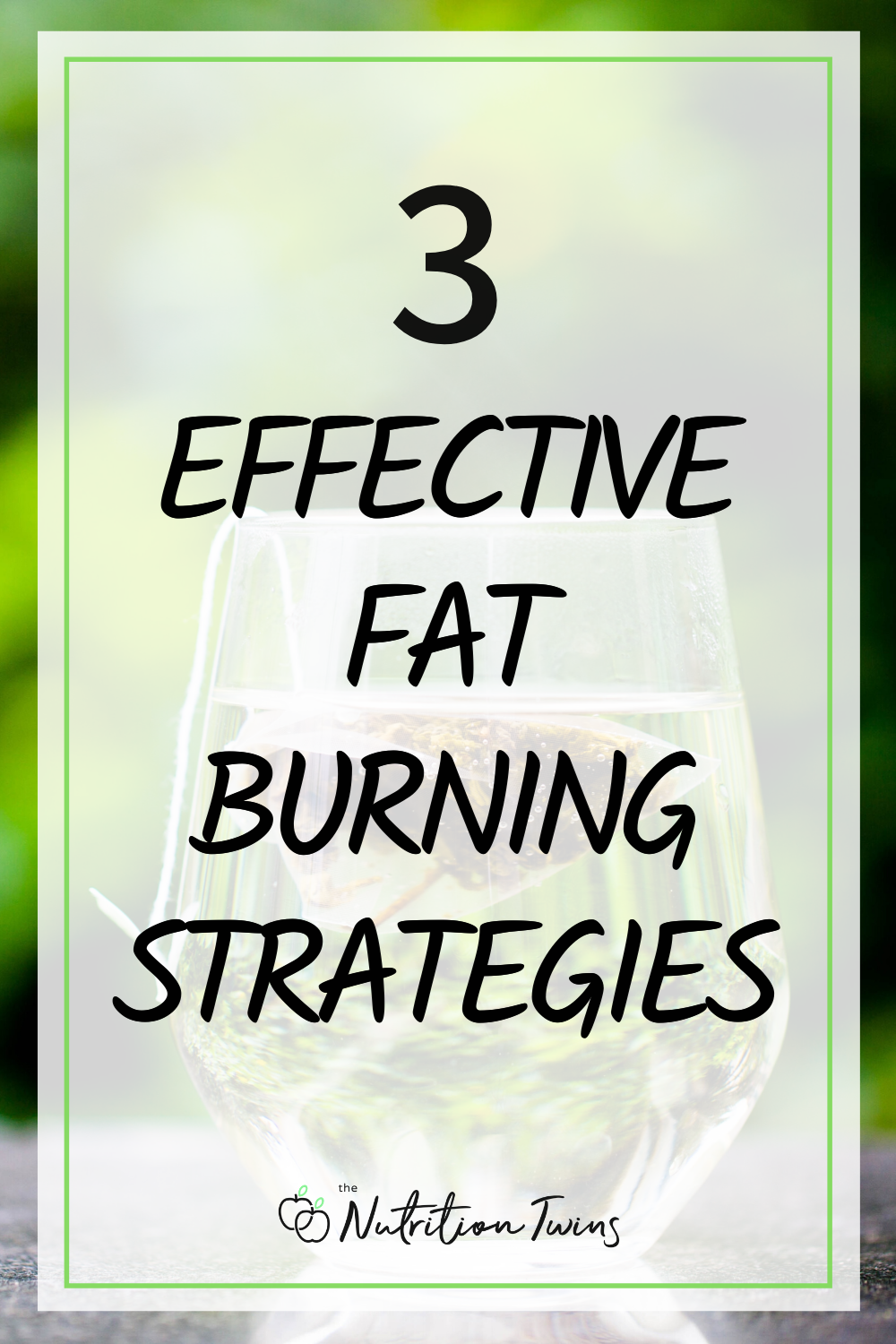
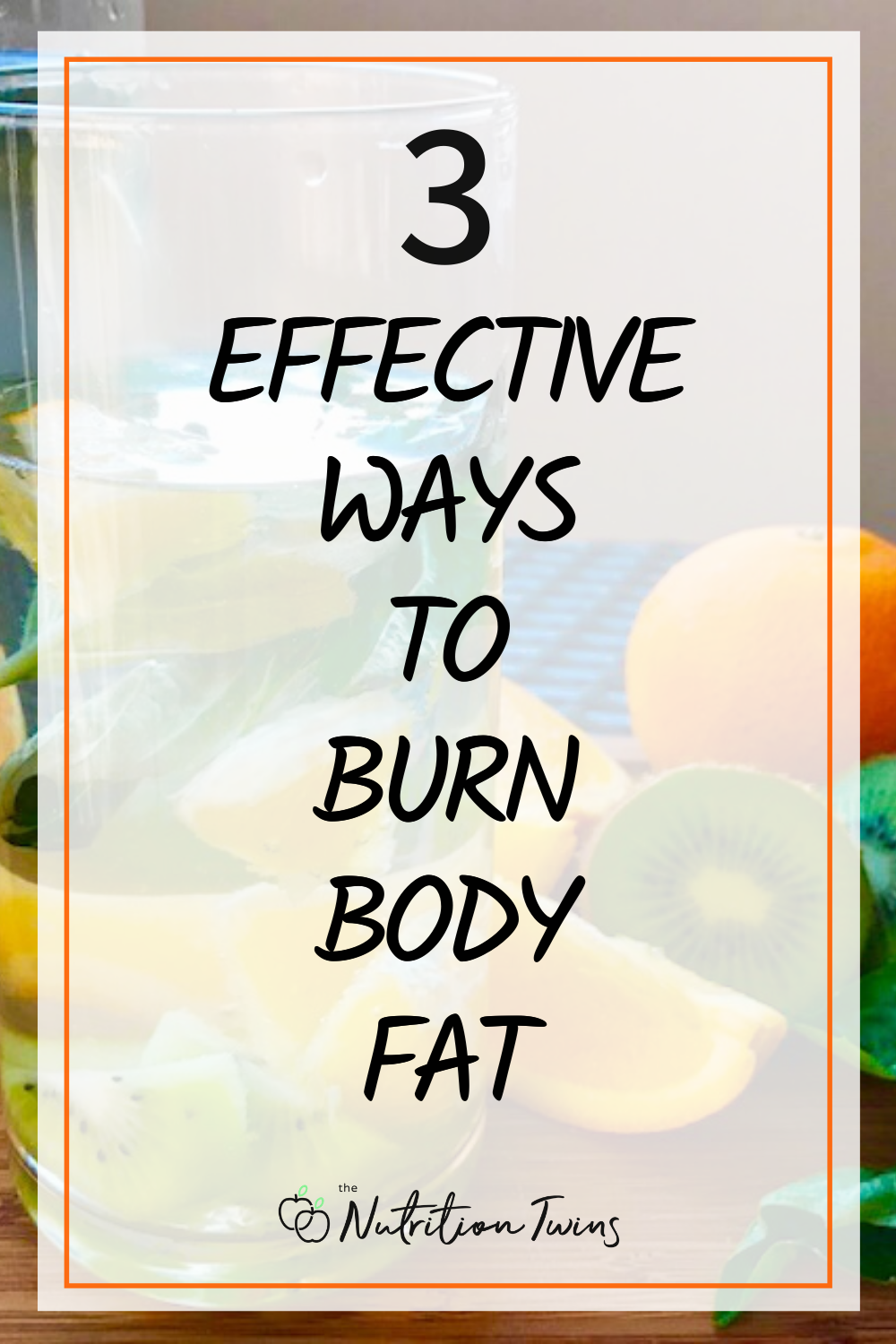
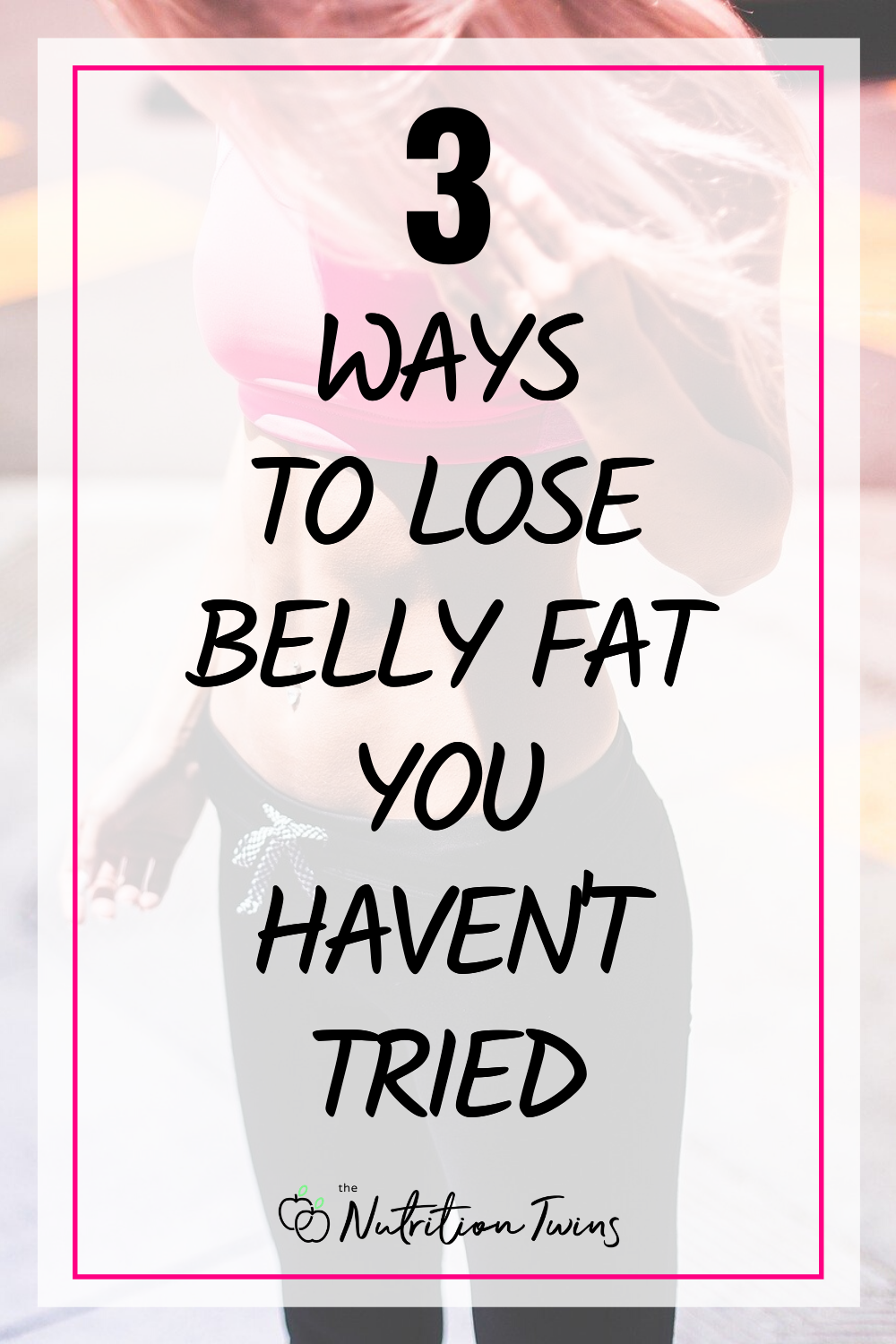
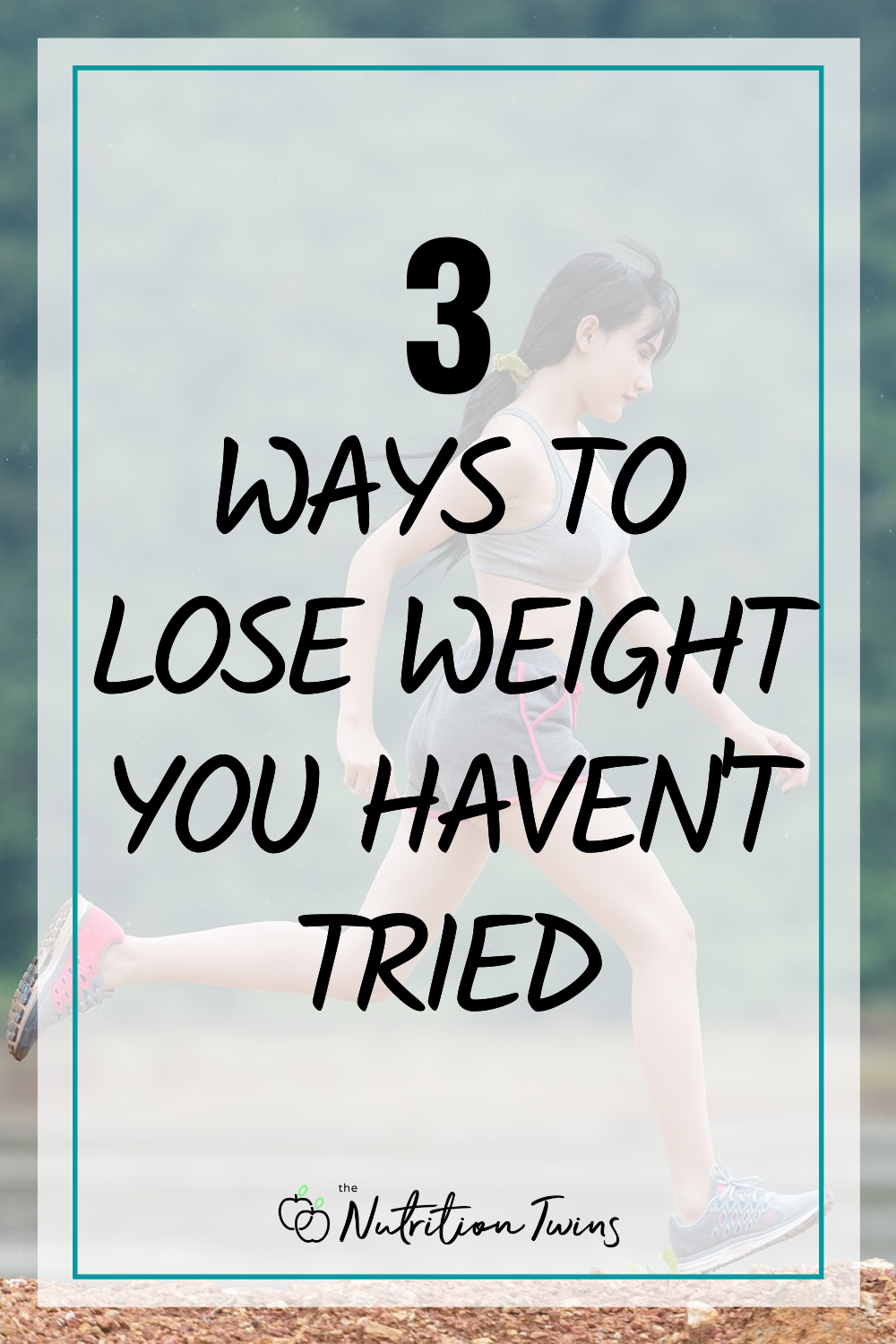


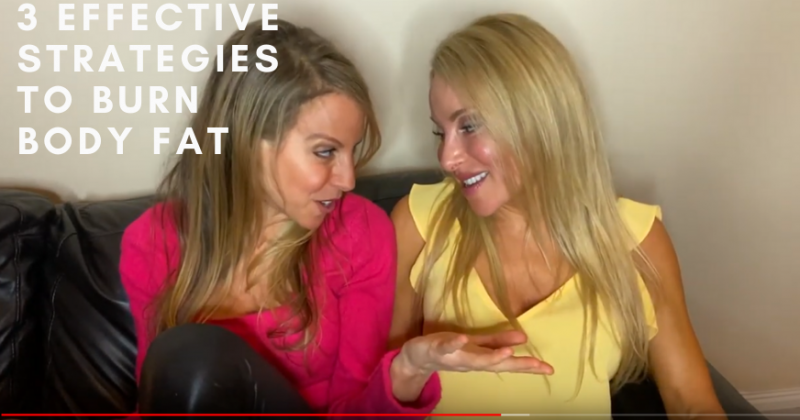
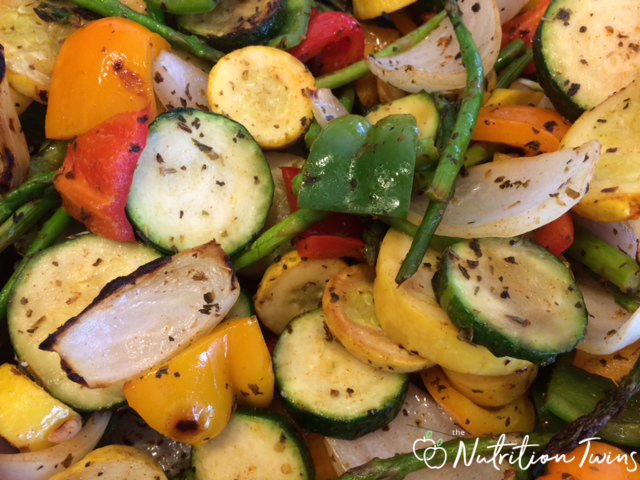
wow, u provide amazing strategies fo burn body fat. I read this blog. u provide such a so nice content about burn body fat.
I’m so glad I came across your blog! I really suffer from overweight all my life. As long as I can remember, I tried a variety of diets and proper nutrition. Regarding a water – I drink a lot during the day. I can drink 10-12 cups per day. I think it is even too much. Nevertheless, I can’t satisfy my hunger. How difficult it is to keep everything in balance… Your advice is very valuable for me. I will definitely try them all to normalize my daily regimen and food intake. Thanks for the detailed article and your advice! Good luck!
Hi! You are so sweet, we hope this helps! That’s wonderful that you drink a lot of water throughout the day! We know it can be difficult to satisfy hunger, but there are many things that you can do to help. One thing is to always make sure you have adequate protein and fiber at each meal. The two work together and they both help to keep you satisfied. We help our clients to find the right amount of protein and fiber for them personally and we make it easy for them so they are satiated with the snacks that we give them that work in their lifestyles. For example, a hardboiled egg and a piece of fruit may work as a snack for one person, but another person may hate that snack, or find it doesn’t satisfy them. We hope this helps! xoxo
Is Chia seeds great for losing weight too?
I’ve always struggled with drinking water to stay hydrated even though I know the benefits for weight loss. Thank you for the great article! I will certainly use some of these tips.
Hi Tiffany! You are so welcome, and we hope the tips are helpful for you! We have many clients who have struggled to drink enough water as well. Have you tried any of our water infusions? They’re a great way to add flavor, antioxidants and vitamins to the water. And they’re really simple– you really can take any of your favorite fruits or veggies and spruce up your water to help you to keep sipping throughout the day. Please let us know if you have any more questions! xoxo
Great blog. These tips are very helpful. I want to lose weight but I don’t want to take supplements for that. I visited a nutritionist last month and he suggested me to take foods like basil seeds and avocado. These foods are helping me a lot but I also wanted some motivation for the workout too. Now, after reading all your tips I feel motivated and will surely follow these tips in my day to day life. Thanks for sharing such an amazing post.
I like your tip about choosing exercises that reduce fat effectively to start your weight loss journey. My sister has been wanting to lose weight for her wedding. I think we should start working out together and see if there is a fat loss training that we can do together.